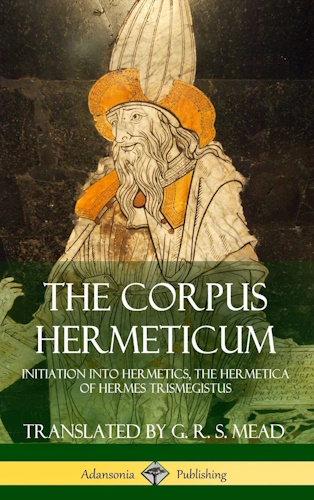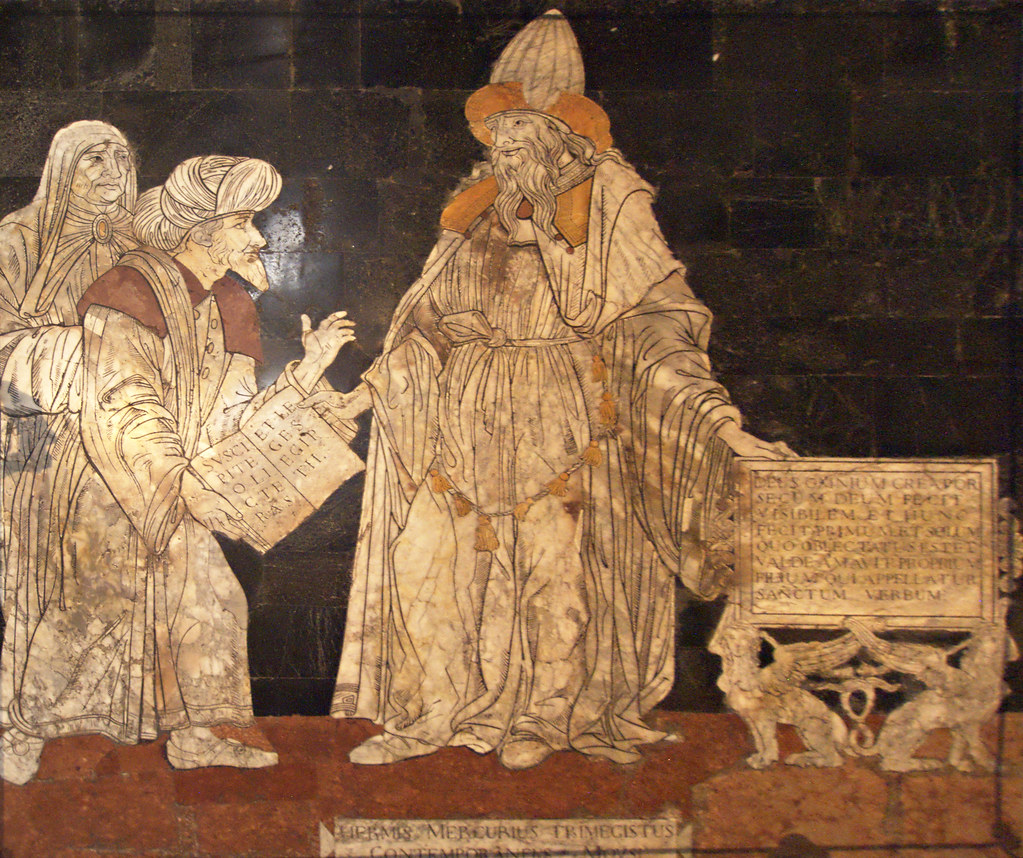
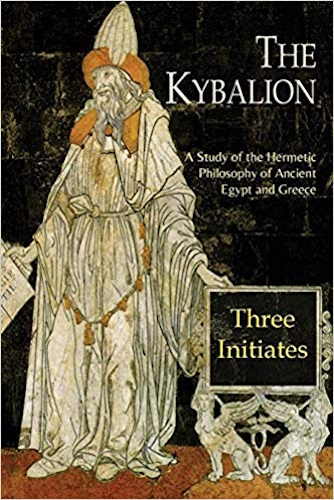

![Thrice-Greatest Hermes; Studies in Hellenistic Theosophy and Gnosis [Three Volumes in One] Thrice-Greatest Hermes; Studies in Hellenistic Theosophy and Gnosis [Three Volumes in One]](http://realityroars.com/images/affiliate-creative/thrice-greatest-hermes--studies-in-hellenistic-theosophy-and-gnosis.jpg)

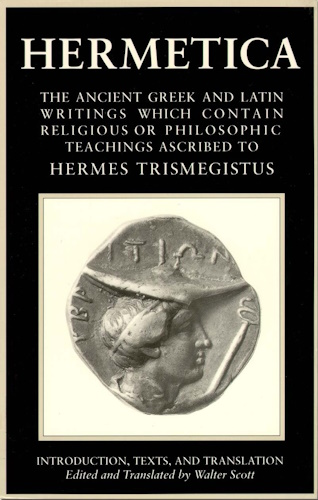



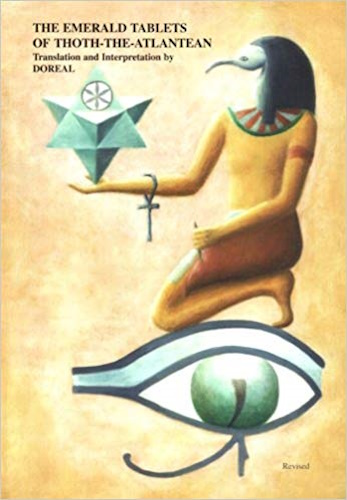

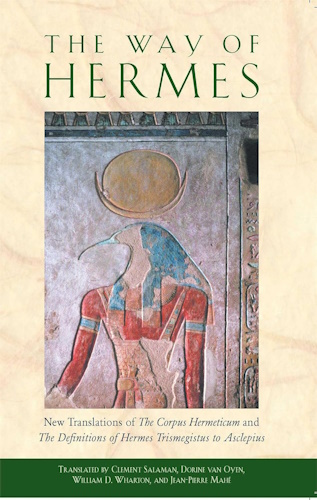

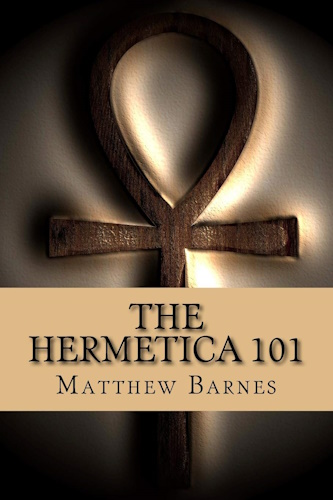

![]()
![]()
VIII. That No One of Existing Things doth Perish, but Men in Error Speak of Their Changes as Destructions and as Deaths
<The idea of cyclic change central to CH III, "The Sacred Sermon", also takes center stage here. A current of ancient speculation grounded in astrology held that as the planets returned after vast cycles of time to the same positions, so all events on earth would repeat themselves precisely into eternity in the future - and had done so from eternity in the past. The technical term for this recurrence, apocatastasis, is the word Mead translates as "restoration" in the beginning of section 4.
<Mead footnotes this tractate as "obscure" and "faulty" in places, and his translation of the beginning of section 3 is conjectural. - JMG>
1. [Hermes:] Concerning Soul and Body, son, we now must speak; in what way Soul is deathless, and whence comes the activity in composing and dissolving Body.
For there's no death for aught of things [that are]; the thought this word conveys, is either void of fact, or [simply] by the knocking off a syllable what is called "death", doth stand for "deathless".
For death is of destruction, and nothing in the Cosmos is destroyed. For if Cosmos is second God, a life <or living creature> that cannot die, it cannot be that any part of this immortal life should die. All things in Cosmos are parts of Cosmos, and most of all is man, the rational animal.
2. For truly first of all, eternal and transcending birth, is God the universals' Maker. Second is he "after His image", Cosmos, brought into being by Him, sustained and fed by Him, made deathless, as by his own Sire, living for aye, as ever free from death.
Now that which ever-liveth, differs from the Eternal; for He hath not been brought to being by another, and even if He have been brought to being, He hath not been brought to being by Himself, but ever is brought into being.
For the Eternal, in that It is eternal, is the all. The Father is Himself eternal of Himself, but Cosmos hath become eternal and immortal by the Father.
3. And of the matter stored beneath it <i.e., beneath the cosmos>, the Father made of it a universal body, and packing it together made it spherical - wrapping it round the life - [a sphere] which is immortal in itself, and that doth make materiality eternal.
But He, the Father, full-filled with His ideas, did sow the lives <or living creatures> into the sphere, and shut them in as in a cave, willing to order forth the life with every kind of living.
So He with deathlessness enclosed the universal body, that matter might not wish to separate itself from body's composition, and so dissolve into its own [original] unorder.
For matter, son, when it was yet incorporate <i.e., not yet formed into bodies>, was in unorder. And it doth still retain down here this [nature of unorder] enveloping the rest of the small lives <or living creatures> - that increase-and-decrease which men call death.
4. It is round earthly lives that this unorder doth exist. For that the bodies of the heavenly ones preserve one order allotted to them by the Father as their rule; and it is by the restoration of each one [of them] this order is preserved indissolute.
The "restoration" of bodies on the earth is thus their composition, whereas their dissolution restores them to those bodies which can never be dissolved, that is to say, which know no death. Privation, thus, of sense is brought about, not loss of bodies.
5. Now the third life - Man, after the image of the Cosmos made, [and] having mind, after the Father's will, beyond all earthly lives - not only doth have feeling with the second God <i.e., the Cosmos>, but also hath conception of the first; for of the one 'tis sensible as of a body, while of the other it conceives as bodiless and the Good Mind.
Tat: Doth then this life not perish?
Hermes: Hush, son! and understand what God, what Cosmos [is], what is a life that cannot die, and what a life subject to dissolution.
Yea, understand the Cosmos is by God and in God; but Man by Cosmos and in Cosmos.
The source and limit and the constitution of all things is God.


![Thrice-Greatest Hermes; Studies in Hellenistic Theosophy and Gnosis [Three Volumes in One] Thrice-Greatest Hermes; Studies in Hellenistic Theosophy and Gnosis [Three Volumes in One]](http://realityroars.com/images/affiliate-creative/thrice-greatest-hermes--studies-in-hellenistic-theosophy-and-gnosis.jpg)











-
Urantia Book, 44:0.11 - The Celestial Artisans
Never in your long ascendancy will you lose the power to recognize your associates of former existences. Always, as you ascend inward in the scale of life, will you retain the ability to recognize and fraternize with the fellow beings of your previous and lower levels of experience. Each new translation or resurrection will add one more group of spirit beings to your vision range without in the least depriving you of the ability to recognize your friends and fellows of former estates.
-
Princess Bride 1987 Wallace Shawn (Vizzini) and Mandy Patinkin (Inigo Montoya)
Vizzini: HE DIDN'T FALL? INCONCEIVABLE.
Inigo Montoya: You keep using that word. I do not think it means what you think it means. -
Urantia Book, 117:4.14 - The Finite God
And here is mystery: The more closely man approaches God through love, the greater the reality -- actuality -- of that man. The more man withdraws from God, the more nearly he approaches nonreality -- cessation of existence. When man consecrates his will to the doing of the Father's will, when man gives God all that he has, then does God make that man more than he is.
-
Urantia Book, 167:7.4 - The Talk About Angels
"And do you not remember that I said to you once before that, if you had your spiritual eyes anointed, you would then see the heavens opened and behold the angels of God ascending and descending? It is by the ministry of the angels that one world may be kept in touch with other worlds, for have I not repeatedly told you that I have other sheep not of this fold?"
-
Urantia Book, Foreword - 0:12.12 - The Trinities
But we know that there dwells within the human mind a fragment of God, and that there sojourns with the human soul the Spirit of Truth; and we further know that these spirit forces conspire to enable material man to grasp the reality of spiritual values and to comprehend the philosophy of universe meanings. But even more certainly we know that these spirits of the Divine Presence are able to assist man in the spiritual appropriation of all truth contributory to the enhancement of the ever-progressing reality of personal religious experience—God-consciousness.
-
Urantia Book, 1:4.3 - The Mystery Of God
When you are through down here, when your course has been run in temporary form on earth, when your trial trip in the flesh is finished, when the dust that composes the mortal tabernacle "returns to the earth whence it came"; then, it is revealed, the indwelling "Spirit shall return to God who gave it." There sojourns within each moral being of this planet a fragment of God, a part and parcel of divinity. It is not yet yours by right of possession, but it is designedly intended to be one with you if you survive the mortal existence.
-
Urantia Book, 1:4.1 - The Mystery Of God
And the greatest of all the unfathomable mysteries of God is the phenomenon of the divine indwelling of mortal minds. The manner in which the Universal Father sojourns with the creatures of time is the most profound of all universe mysteries; the divine presence in the mind of man is the mystery of mysteries.
-
Urantia Book, 1:4.6 - The Mystery Of God
To every spirit being and to every mortal creature in every sphere and on every world of the universe of universes, the Universal Father reveals all of his gracious and divine self that can be discerned or comprehended by such spirit beings and by such mortal creatures. God is no respecter of persons, either spiritual or material. The divine presence which any child of the universe enjoys at any given moment is limited only by the capacity of such a creature to receive and to discern the spirit actualities of the supermaterial world.
-
Urantia Book, 11:0.1 - The Eternal Isle Of Paradise
Paradise is the eternal center of the universe of universes and the abiding place of the Universal Father, the Eternal Son, the Infinite Spirit, and their divine co-ordinates and associates. This central Isle is the most gigantic organized body of cosmic reality in all the master universe. Paradise is a material sphere as well as a spiritual abode. All of the intelligent creation of the Universal Father is domiciled on material abodes; hence must the absolute controlling center also be material, literal. And again it should be reiterated that spirit things and spiritual beings are real.
-
Urantia Book, 50:6.4 - Planetary Culture
Culture presupposes quality of mind; culture cannot be enhanced unless mind is elevated. Superior intellect will seek a noble culture and find some way to attain such a goal. Inferior minds will spurn the highest culture even when presented to them ready-made.
-
Urantia Book, 54:1.6 - True And False Liberty
True liberty is the associate of genuine self-respect; false liberty is the consort of self-admiration. True liberty is the fruit of self-control; false liberty, the assumption of self-assertion. Self-control leads to altruistic service; self-admiration tends towards the exploitation of others for the selfish aggrandizement of such a mistaken individual as is willing to sacrifice righteous attainment for the sake of possessing unjust power over his fellow beings.
-
Urantia Book, 54:1.9 - True And False Liberty
How dare the self-willed creature encroach upon the rights of his fellows in the name of personal liberty when the Supreme Rulers of the universe stand back in merciful respect for these prerogatives of will and potentials of personality! No being, in the exercise of his supposed personal liberty, has a right to deprive any other being of those privileges of existence conferred by the Creators and duly respected by all their loyal associates, subordinates, and subjects.
-
Urantia Book, 54:1.8 - True And False Liberty
There is no error greater than that species of self-deception which leads intelligent beings to crave the exercise of power over other beings for the purpose of depriving these persons of their natural liberties. The golden rule of human fairness cries out against all such fraud, unfairness, selfishness, and unrighteousness.

